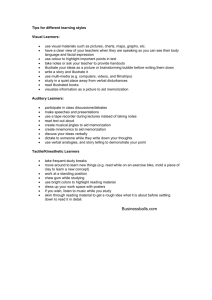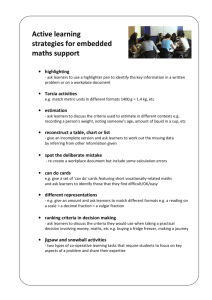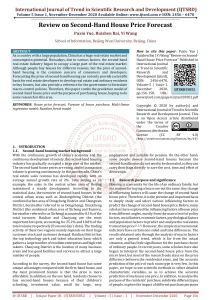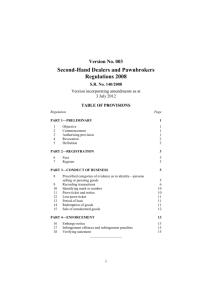Click here to the DJ teachers notes
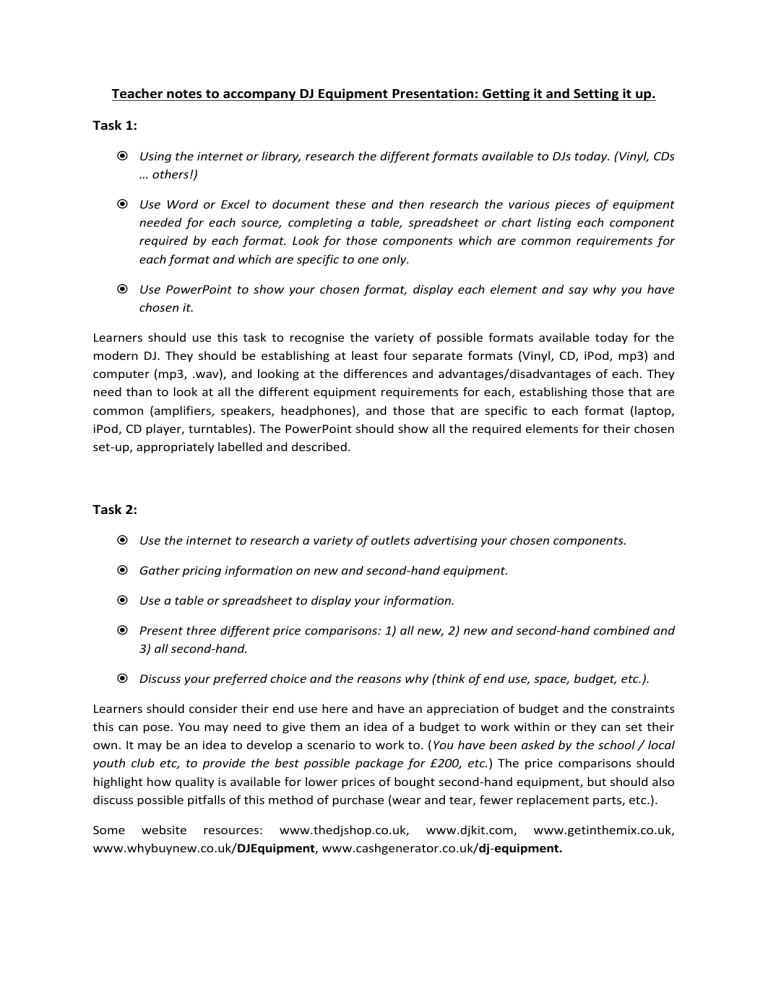
Teacher notes to accompany DJ Equipment Presentation: Getting it and Setting it up.
Task 1:
Using the internet or library, research the different formats available to DJs today. (Vinyl, CDs
… others!)
Use Word or Excel to document these and then research the various pieces of equipment needed for each source, completing a table, spreadsheet or chart listing each component required by each format. Look for those components which are common requirements for each format and which are specific to one only.
Use PowerPoint to show your chosen format, display each element and say why you have chosen it.
Learners should use this task to recognise the variety of possible formats available today for the modern DJ. They should be establishing at least four separate formats (Vinyl, CD, iPod, mp3) and computer (mp3, .wav), and looking at the differences and advantages/disadvantages of each. They need than to look at all the different equipment requirements for each, establishing those that are common (amplifiers, speakers, headphones), and those that are specific to each format (laptop, iPod, CD player, turntables). The PowerPoint should show all the required elements for their chosen set-up, appropriately labelled and described.
Task 2:
Use the internet to research a variety of outlets advertising your chosen components.
Gather pricing information on new and second-hand equipment.
Use a table or spreadsheet to display your information.
Present three different price comparisons: 1) all new, 2) new and second-hand combined and
3) all second-hand.
Discuss your preferred choice and the reasons why (think of end use, space, budget, etc.).
Learners should consider their end use here and have an appreciation of budget and the constraints this can pose. You may need to give them an idea of a budget to work within or they can set their own. It may be an idea to develop a scenario to work to. (You have been asked by the school / local
youth club etc, to provide the best possible package for £200, etc.) The price comparisons should highlight how quality is available for lower prices of bought second-hand equipment, but should also discuss possible pitfalls of this method of purchase (wear and tear, fewer replacement parts, etc.).
Some website resources: www.thedjshop.co.uk, www.djkit.com, www.getinthemix.co.uk, www.whybuynew.co.uk/DJEquipment, www.cashgenerator.co.uk/dj-equipment.
Task 3:
Using the internet and PowerPoint, create a presentation highlighting the variety of different connections used to join the different pieces of equipment together.
Ensure that you use pictures as well as text to show the differences between each connection type.
Try to develop a diagram that will highlight how you will connect your chosen set-up and highlight the connectors and leads needed to do so.
Highlight the safety considerations of connecting electrical equipment together.
During this task, learners should be made fully aware of the centre’s policy on Health and Safety and how it relates to their working practice there and also the implications in the wider world. It is important that they show that they have knowledge of the many different types of connection,
(RCA, ¼ inch jack, speakon, etc.) and that they are aware of the needs of their own chosen set-up.
The diagram can be hand drawn or learners may utilise computer software.
Task 4:
Gather together your available DJ equipment.
Establish the various connections needed to connect the rig together.
Safety is paramount! Make sure that you operate within the establishment’s Health and
Safety policy at all times.
Connect the equipment.
Test your connections by ensuring that you are able to hear sound.
In the event of any problems, look for solutions!
Record all your actions in detailed note form.
This is a practical exercise and will require access to DJ equipment to gain greatest benefit. Learners should spend time experimenting with the connections for themselves after receiving H&S briefing relating to the relevant dangers and centre policies. It is important that they are able to learn from the process the ‘correct’ way to connect all the pieces together, so that they can generate an outputted sound. This needs to be done before moving onto the other elements of mixing and performance.

